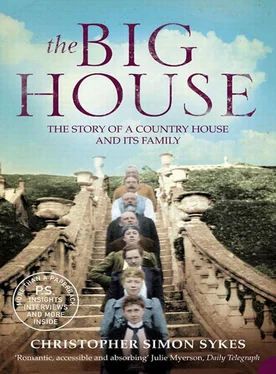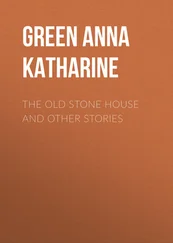The man who was to teach Tatton the most valuable lessons was ‘Gentleman’ John Jackson, a man of almost perfect physique, who was said to be ‘the best-made man of a generation of very well-made men’. 17 Though he only fought in the ring three times, on the last occasion beating the reigning champion, Dan Mendoza, in ten minutes, he made a deep and lasting impression on all who saw him. ‘His style of boxing,’ wrote Lord Knebworth, a historian of the sport, ‘was elegant and easy, and he was particularly light and quick on his feet. His judgement of distance, so important in boxing, was unsurpassed, and his blows, which were terrific in their force, were delivered so fast that they were said to be perceptible in their effect alone.’ 18 He too set up a school in rooms at 13 Old Bond Street, and it was here that Tatton attended. The Revd M. Morris, who knew the Sykes family well in later years, told a story in his Reminiscences , of how the young Tatton ‘once got his father to go to London to see a great fight on some sort of stage. On reaching the appointed spot the father, to his surprise, saw his son appear as one of the combatants, whereupon he instantly took his departure.’ 19
In August Tatton set out on a visit to Sledmere. ‘Took a place in the York Coach,’ he noted on 19 August. He paid a down payment of £1 . 5 s. , which represented half of the fare. He paid the other half when he left two days later. Long before dawn, a hackney coach, price 2 s. , collected him and his trunk from his lodgings and took him to the White Horse Inn, Fetter Lane, in time to catch the 5.00 a.m. York Highflyer. He would also have had the choice of either the Royal Mail, which left from the Bull and Mouth Inn, St Martins-le-Grand, or the Mercury, from the Saracen’s Head, Snow Hill. Thirty years previously, such a trip, a distance of 200 miles up the Great North Road, would have taken three days in the summer and four in winter. The coach boarded by Tatton did the same journey in thirty-one hours. 20
The time the journey took reflected the advances in the state of England’s roads, which had taken place in the latter half of the eighteenth century. ‘The great improvements which, within the memory of man, have been made in the turnpike roads throughout this kingdom,’ wrote a contributor to the Gentleman’s Magazine in 1792, ‘would be incredible did we not actually perceive them.’ When Faujas de Saint Fond, the noted French traveller, set out on his journey to the Hebrides in 1784, he travelled up the Great North Road. ‘From London to Barnet, twelve miles,’ he noted in his journal, ‘– a superb road, covered with carriages, and with people on horseback and on foot, who were returning, in a fine moonlight evening, to London, from the country houses and neighbouring villages, where they go to recreate themselves during Sunday.’ He passed through Hatfield, Stevenage, Dugden and Stilton, where he commented, ‘Nothing can surpass the beauty and convenience of the road during these sixty-three miles; it resembles the avenue of a magnificent garden.’ Saint Fond also noticed that ‘at Stilton, one begins to observe, on the sides of the road, large heaps of stones destined to repair it’. 21
The Highflyer took the same route. After Stilton, with a change of horses at staging posts some twelve to fifteen miles apart, and an average speed of seven miles an hour, the main stops were at Stamford, Newark, Doncaster, Ferrybridge, Tadcaster, and finally York. Here Tatton was deposited at the York Tavern at around midday on 22 August, his eighteenth birthday. He chose to lodge in the city for the night, and on the following day he visited the hairdresser. Then he picked up a horse and rode over to Sledmere. He didn’t stay long. Driven away by the piles of rubble everywhere, the scaffolding all over the house, and the constant noise of the workmen, he decided that some sea air would do him good and went instead to Scarborough, still a fashionable spa, where he took lodgings for a month and passed his time sea-bathing, riding, coffee-housing and visiting the play at the theatre on Tanner Street. Altogether he spent ten weeks in Yorkshire, before returning to London at the beginning of November and back to the offices of Atkinson and Farrer. He was soon visiting his old haunts and 13 November found him back at the boxing school.
Apart from his love of boxing, there is one other clue as to the path that Tatton’s life was to take, and it is to be found on the inside cover of the book in which he wrote his accounts. In small neat handwriting he wrote, ‘My bay Mare covered by Astonishment in May 1790. Astonishment was bred by the late Sir John Lister Kay and sold by him to Col Ratcliffe. Astonishment was got by Highflyer, his Dam (which was also the dam of Phenomenon) by Eclipse, his Grandam by Engineer …’ For a seventeen-year-old this demonstrates a precocious interest in breeding, for Astonishment, the stallion which had covered Tatton’s bay mare, had a startling pedigree. His father, Highflyer, had sired the winners of 470 races, including three Derbys and four St Legers, and had made so much money for his owner, Mr Richard Tattersall, that he was able to build himself a mansion near Ely, which he named Highflyer Hall. Astonishment’s mother was a daughter of Eclipse, said to have been ‘the fleetest horse that ever ran in England’. 22
Tatton’s heart was not in the Bar. While he sat in the office, hunched over documents and occasionally scratching away with his quill pen, he was dreaming of horses and the Turf. According to the sporting journalist, Henry Hall Dixon, better known as ‘The Druid’, Tatton astonished his fellow clerks by walking from London to Epsom in June, 1791, to see the Duke of Bedford’s Eager win the Derby, leaving his lodgings at four in the morning and returning the same night at eleven. Why he chose to go on foot is a mystery, since his accounts show that he kept a horse in town, stabled at Joseph Denison’s house. The following year he rode down to watch the race won by Lord Grosvenor’s John Bull, and stayed on to see the Oaks taken by Lord Clermont’s Volante, another progeny of Highflyer. Three weeks later, an entry in his account book for 12 June reads ‘Expences at Ascott Races two days. £2. 2 s .’. He was hooked.
Having acquired a rudimentary knowledge of the Law, but shown no aptitude for the Bar, Tatton was summoned by his father back to Sledmere at the end of 1792 and set to work in the East Riding Bank. He lodged with a Mrs Martin in Dagger Lane, Hull. Evidently he did not forget his fellow clerks back in London, for one of the friends he had made amongst them, Thomas Byron, wrote to him on 5 December thanking him for a gift of hares which he had sent them. ‘I assure you I never tasted better,’ he told him, going on to say how glad he was ‘you like your new Situation so well; something more agreeable I think than an Attorneys Clerk’. 23 True to form, Tatton caused raised eyebrows on his first Saturday at the bank by walking the thirty-two miles home to Sledmere at the end of the day’s business, in order to spend Sunday there, and walking back again in time for work on Monday morning. Already, at the age of twenty, legends were beginning to grow up around him.
Tatton’s diary for 1793 suggests that his life in Hull was mostly taken up with life at the bank, visits to his father at Sledmere, where he occasionally helped with the accounts, hunting and riding. He also made frequent visits to his grandmother, Decima, Lady Sykes, who lived in Beverley and whose health was failing. On Friday, 15 February, he received unwelcome news: ‘A Messenger came from Beverley with the sad news of my Grandmother’s being seized with the Palsy. My Father and I came over.’ Apart from the odd rally round she never recovered and his entry for 9 March reads ‘4 o’clock this morning my Grandmother died. My father came down from London.’
Читать дальше












![Edward Ellis - Adrift on the Pacific - A Boys [sic] Story of the Sea and its Perils](/books/753342/edward-ellis-adrift-on-the-pacific-a-boys-sic-s-thumb.webp)